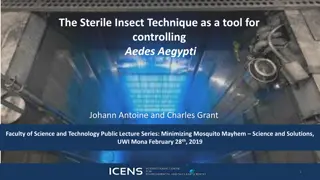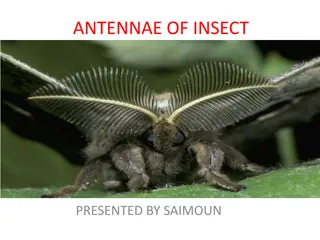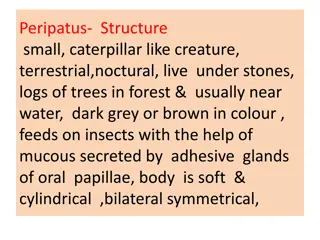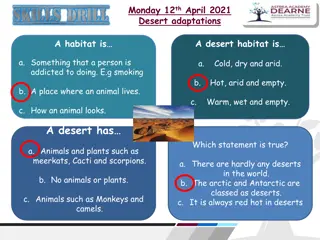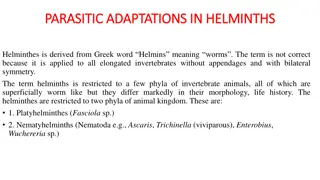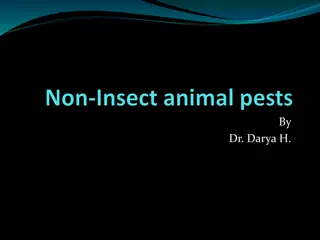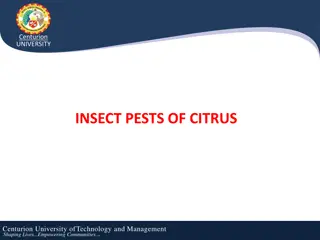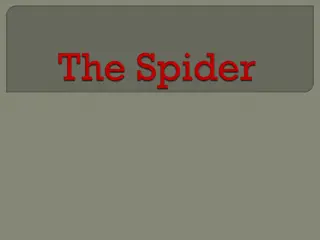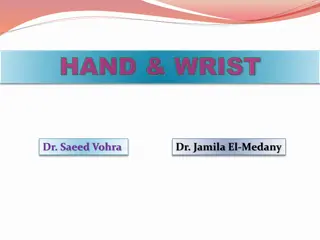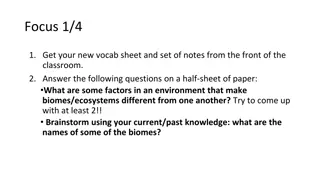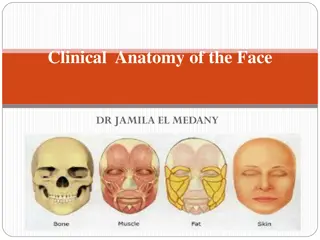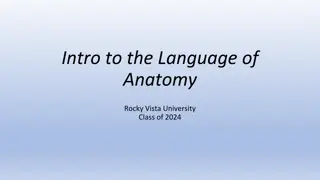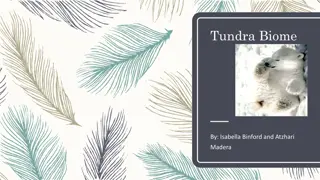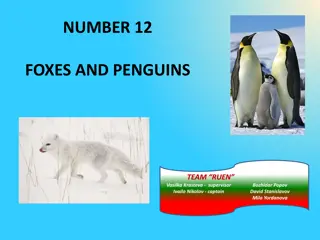Understanding Insect Legs: Anatomy and Adaptations
Explore the intricate anatomy of insect legs, comprising segments like coxa, trochanter, femur, tibia, and tarsus, each serving specific functions for locomotion. Discover how these legs are adapted for diverse tasks like walking and running in different insect species.
Download Presentation

Please find below an Image/Link to download the presentation.
The content on the website is provided AS IS for your information and personal use only. It may not be sold, licensed, or shared on other websites without obtaining consent from the author. Download presentation by click this link. If you encounter any issues during the download, it is possible that the publisher has removed the file from their server.
E N D
Presentation Transcript
INSECT LEGS 311 zoo
INTRODUCTION Most insects have three pairs of walking legs one pair on each thoracic segment. Each leg contains compaonents (segments) with one another by means of hinge joints: six that structural articulate
Coxa: usually a short, stout article. It is the functional but not primitive basal attachment of the legs to the thoracic body wall. Trochanter: is a short articls between the coxa and the femur. It is usually reduced and is almost always singles. Femur: is the section of leg between the trochanter and the tibia. Its generally the legs most prominent, robust article. It may be armed with stout but immovable spines.
Tibia: attaches to the femur proximally and to the tarsus distally. It's femoral articulation permits vertical motion, so it is capable of being flexed against, and closely applied to, the femur.
The salender tarsus or foot attaches distally to the tibia. It is commonly divided into five or fewer articles, or tarsomeres.
pretarsus is often interpreted as the ultimate part of the tarsus but is actually a small, distinct article of its own. It usually bears a median outgrowth or lobe called the arolium and pair of movable claws
LEG ADAPATIONS AND MODIFICATIONS
Walking legs (Ambulatory legs) are used for walking. The legs are long. Examples: Bugs (order Hemiptera), leaf beetles (Corder oleoptera).
2. Running legs (Cursorial legs) are modified for running. Note the long, thin leg segments. Examples: Cockroaches (order Blattaria),
3. Digging legs (Fossorial fore legs) are modified for digging. These legs become short and flat. Serrated edges become sharp and strong to help them dig. Examples: Ground dwelling insects; mole crickets
4. Swimming legs (Natorial ): modified for swimming. These legs become flat and have long setae on the tarsi. legs are Examples: Aquatic beetes (order Coleoptera) .
5. grasping legs (Raptorial) legs modified for grasping (catching prey). coxa become longer. Femure, Titia brovied with spins strong. Ex.: Mantids (order Mantodea).
6. jumping legs (Saltatorial): These legs are characterized by an elongated femur and tibia and the femur is highly muscularized. Grasshoppers Orthoptera). Examples: (order
7. Collecting legs: the first segment of the tarsus is enlarged with large numbers of hairs. A basket is formed in the connection between the tibia and the tarsus, and this basket is used for collecting the pollen grains. Present in hind leg of honey bee workers.
Cleaning legs: The Middle leg has brushes for cleaning the thorax. the long spines at the end are used to loosen pellets of pollen from the pollen baskets of the hind legs and also for cleaning the wings and the small breathing pores or spiracles (honey bee workers).
8. Clinging legs: the tarsus consist of one segment attached a terminal lobe used for clinging the host hair (Lice)


